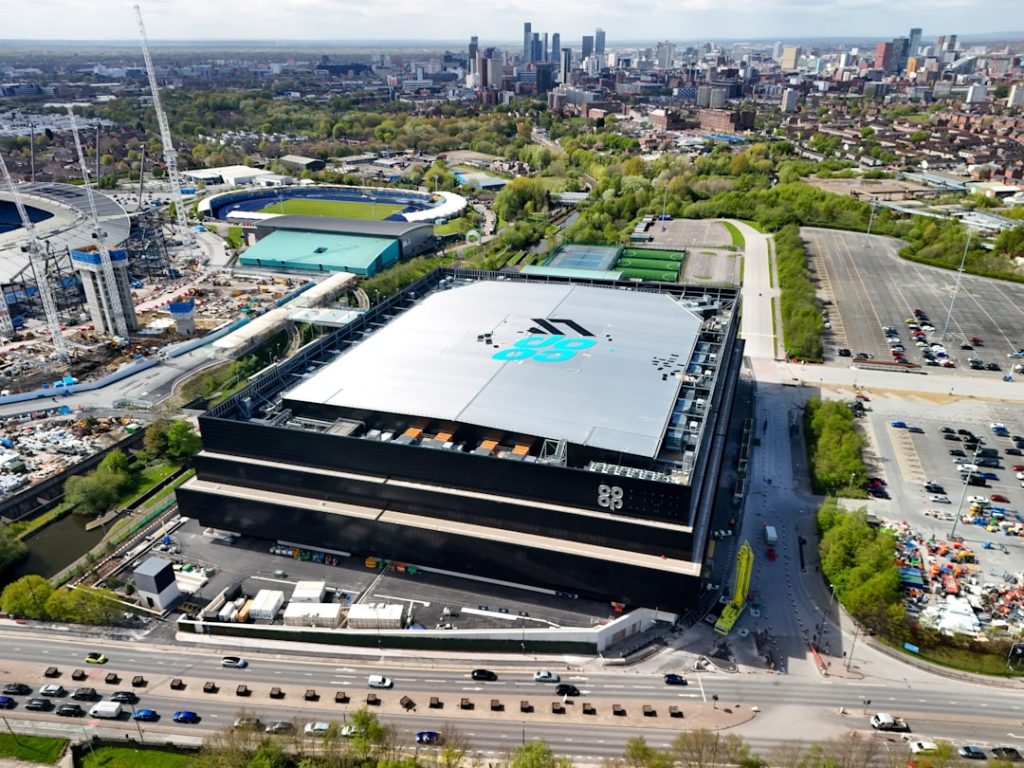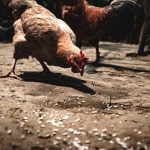When considering the needs of livestock in hot weather, it is essential to account for breed-specific characteristics. Different breeds exhibit varying levels of heat tolerance, which significantly impacts their ability to cope with high temperatures. For instance, cattle breeds such as Brahman and Senepol demonstrate superior heat tolerance compared to other breeds.
Similarly, certain sheep breeds like Dorper and St. Croix are better adapted to hot climates. Understanding these breed-specific traits is crucial for implementing appropriate care strategies during periods of elevated temperatures.
In addition to breed considerations, the age and health status of livestock play a vital role in their heat stress susceptibility. Young animals and those with pre-existing health conditions are generally more vulnerable to the adverse effects of high temperatures. Consequently, these animals may require additional attention and care during hot weather.
By comprehensively assessing the specific needs of livestock based on breed, age, and health factors, caretakers can develop tailored management practices to optimize animal welfare and productivity in hot climates.
Table of Contents
Key Takeaways
- Understanding the breed: Different breeds have different heat tolerance levels, so it’s important to understand your specific breed’s needs.
- Providing shade and shelter: Ensure that your animals have access to shaded areas and shelter to escape the sun’s heat.
- Ensuring proper ventilation: Good airflow is crucial for keeping animals cool, so make sure their living space is well-ventilated.
- Offering cool treats and snacks: Providing cold treats like frozen fruits or vegetables can help animals cool down from the inside out.
- Using misters or sprinklers: Setting up misters or sprinklers in the animals’ living area can help lower the ambient temperature and provide relief from the heat.
- Adjusting feeding and watering schedules: Consider feeding and watering your animals during the cooler parts of the day to prevent heat-related issues.
- Monitoring for signs of heat stress: Keep a close eye on your animals for signs of heat stress, such as excessive panting or lethargy, and take immediate action if necessary.
Providing shade and shelter
Shade: A Crucial Element for Livestock Comfort
One of the most important ways to help your livestock stay cool in hot weather is by providing adequate shade and shelter. This can be achieved through natural shade from trees or man-made structures such as barns or shade sails. It’s important to ensure that there is enough shade available for all of your animals to comfortably escape the direct sun during the hottest parts of the day.
Shelter from the Elements: A Key to Livestock Health
Additionally, providing proper shelter from the elements, such as rain or wind, is crucial for maintaining the health and well-being of your livestock. When providing shade and shelter for your animals, it’s important to consider their specific needs. For example, some animals may prefer a more open shelter, while others may feel more comfortable in a more enclosed space.
Creating a Comfortable Environment for Livestock
By understanding the preferences of your livestock, you can create a comfortable environment that allows them to escape the heat and stay cool during hot weather. Additionally, ensuring that there is adequate airflow in the shelter will help prevent the buildup of heat and humidity, further contributing to the comfort of your animals.
Ensuring proper ventilation

Proper ventilation is essential for helping your livestock stay cool in hot weather. Good airflow helps to reduce the buildup of heat and humidity in enclosed spaces, such as barns or shelters, which can contribute to heat stress in animals. Ensuring proper ventilation can be achieved through a variety of methods, such as installing fans or vents in barns or shelters, or by strategically placing openings to allow for natural airflow.
In addition to providing adequate ventilation in enclosed spaces, it’s also important to consider the ventilation in outdoor areas where your animals spend time. This can be achieved by strategically placing gates or fences to allow for natural airflow, or by creating windbreaks to help reduce the impact of hot winds on your animals. By ensuring proper ventilation in both indoor and outdoor spaces, you can help your livestock stay cool and comfortable during hot weather.
Offering cool treats and snacks
One way to help your livestock beat the heat is by offering them cool treats and snacks. This can include things like frozen fruits or vegetables, such as watermelon or cucumbers, which not only provide hydration but also help lower body temperature. Additionally, offering treats like ice cubes or frozen blocks of water can provide a refreshing way for animals to cool down during hot weather.
In addition to offering cool treats, it’s important to ensure that your animals have access to fresh, clean water at all times. This is crucial for helping them stay hydrated and maintain a healthy body temperature during hot weather. By providing a variety of cool treats and snacks, you can help your livestock stay comfortable and healthy even in the hottest temperatures.
Using misters or sprinklers
Another effective way to help your livestock stay cool in hot weather is by using misters or sprinklers. These systems can be set up in barns or outdoor areas to provide a fine mist of water that helps lower the ambient temperature and provides relief from the heat. Additionally, misters and sprinklers can help keep animals’ skin and fur moist, which aids in cooling them down.
When using misters or sprinklers, it’s important to consider the specific needs of your animals and ensure that they have access to areas where they can choose to be in or out of the mist if they prefer. Additionally, it’s important to monitor the humidity levels in the area where misters or sprinklers are being used, as excessive humidity can contribute to heat stress in animals. By using misters or sprinklers strategically, you can help your livestock stay cool and comfortable during hot weather.
Adjusting feeding and watering schedules

Adjusting Feeding Schedules
Adjusting feeding and watering schedules can make a significant difference in helping your animals cope with the heat. This may involve feeding them earlier in the morning or later in the evening when temperatures are cooler. Providing smaller, more frequent meals can also help prevent digestive issues that can be exacerbated by heat stress.
Ensuring Access to Fresh Water
In addition to adjusting feeding schedules, it’s crucial to monitor water sources to ensure they are clean and free from contaminants. This may involve cleaning water troughs more frequently or providing additional water sources to accommodate increased water consumption during hot weather.
Meeting the Specific Needs of Your Animals
By adjusting feeding and watering schedules to meet the specific needs of your animals during hot weather, you can help them stay healthy and comfortable. This extra care can go a long way in reducing the risk of heat stress and ensuring your livestock thrive even in the hottest temperatures.
Monitoring for signs of heat stress
Finally, it’s crucial to monitor your livestock for signs of heat stress during hot weather. This can include symptoms such as excessive panting, drooling, lethargy, or loss of appetite. Additionally, animals may seek out cooler areas or show signs of distress such as pacing or agitation.
By regularly observing your animals and being aware of these signs, you can take proactive measures to help them stay cool and comfortable. In addition to monitoring for physical signs of heat stress, it’s also important to pay attention to changes in behavior or production levels that may indicate that an animal is struggling with the heat. This may include changes in milk production for dairy cows or changes in weight gain for meat animals.
By being attentive to these indicators, you can take steps to address any issues before they escalate into more serious health problems. In conclusion, understanding the specific needs of your livestock during hot weather is crucial for providing them with the best care possible. By considering breed-specific requirements, providing adequate shade and shelter, ensuring proper ventilation, offering cool treats and snacks, using misters or sprinklers, adjusting feeding and watering schedules, and monitoring for signs of heat stress, you can help your animals stay cool and comfortable even in the hottest temperatures.
By taking proactive measures to care for your livestock during hot weather, you can ensure their health and well-being while also promoting optimal production and performance.
If you’re looking for tips on how to keep your silkie chickens cool during the hot summer months, you might want to check out this article on chicken coop portage. It offers valuable advice on how to design and maintain a coop that provides adequate ventilation and shade for your feathered friends. Keeping your chickens cool is essential for their health and well-being, so be sure to take the necessary steps to create a comfortable living environment for them.
FAQs
What are Silkie chickens?
Silkie chickens are a unique breed of chicken known for their fluffy feathers, black skin, and blue earlobes. They are popular for their gentle and friendly nature, making them great pets for families.
Why is it important to keep Silkie chickens cool?
Silkie chickens have a lot of feathers, which can make them more susceptible to heat stress. Keeping them cool is important to prevent heatstroke and other heat-related health issues.
How can I keep Silkie chickens cool in hot weather?
You can keep Silkie chickens cool in hot weather by providing plenty of shade, ensuring they have access to fresh, cool water at all times, and using fans or misters to lower the temperature in their coop or run.
What are some signs of heat stress in Silkie chickens?
Signs of heat stress in Silkie chickens can include panting, lethargy, loss of appetite, and a drop in egg production. It’s important to monitor your chickens closely during hot weather and take action if you notice any of these signs.
Can I give my Silkie chickens frozen treats to help keep them cool?
Yes, you can give your Silkie chickens frozen treats such as frozen fruits or vegetables to help keep them cool. Just be sure to monitor their intake and avoid giving them anything that could be harmful to their health.
Meet Walter, the feathered-friend fanatic of Florida! Nestled in the sunshine state, Walter struts through life with his feathered companions, clucking his way to happiness. With a coop that’s fancier than a five-star hotel, he’s the Don Juan of the chicken world. When he’s not teaching his hens to do the cha-cha, you’ll find him in a heated debate with his prized rooster, Sir Clucks-a-Lot. Walter’s poultry passion is no yolk; he’s the sunny-side-up guy you never knew you needed in your flock of friends!







